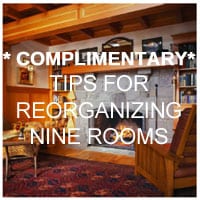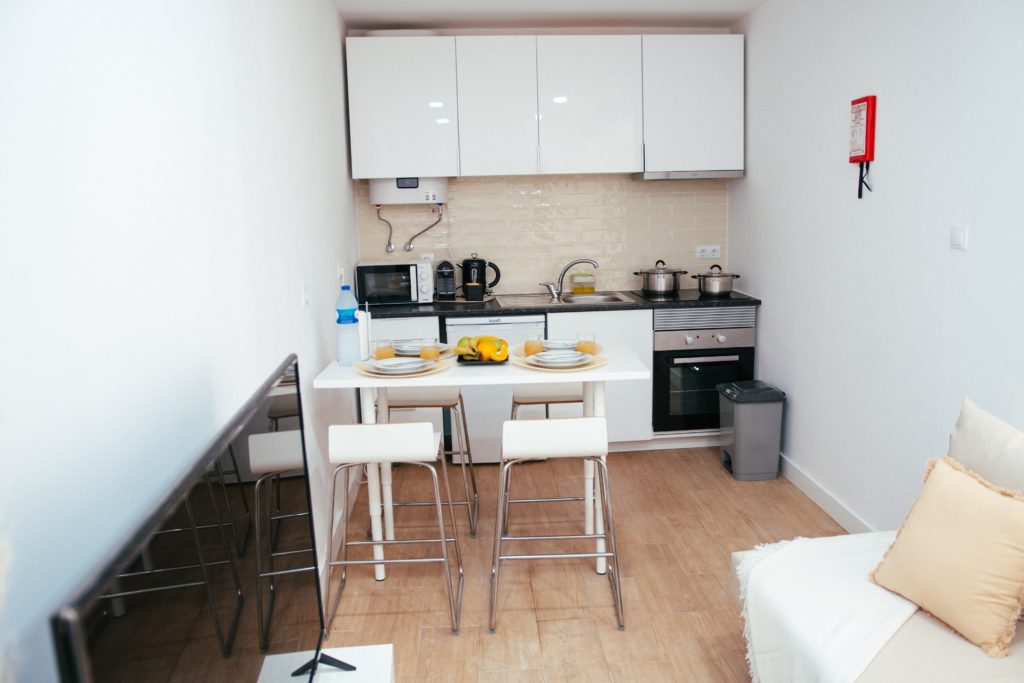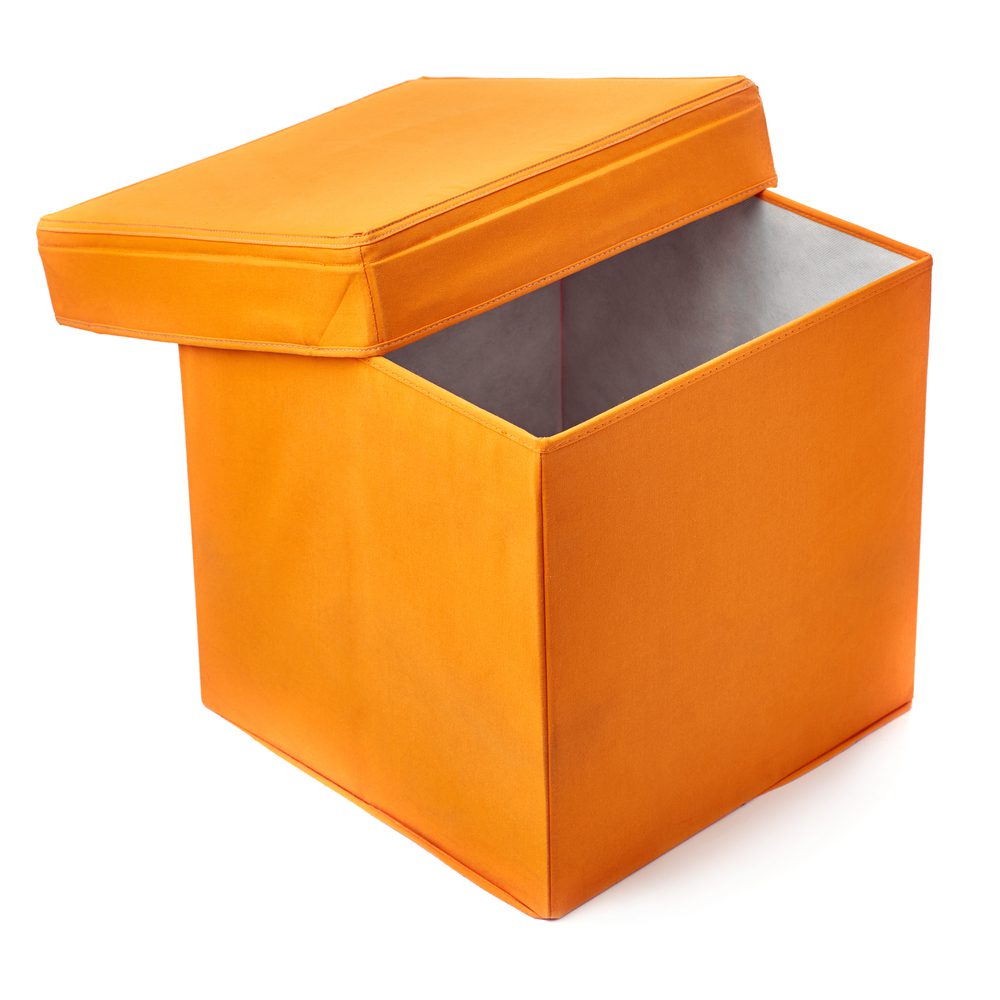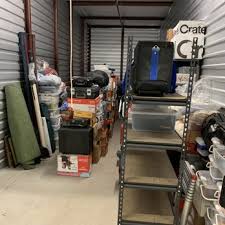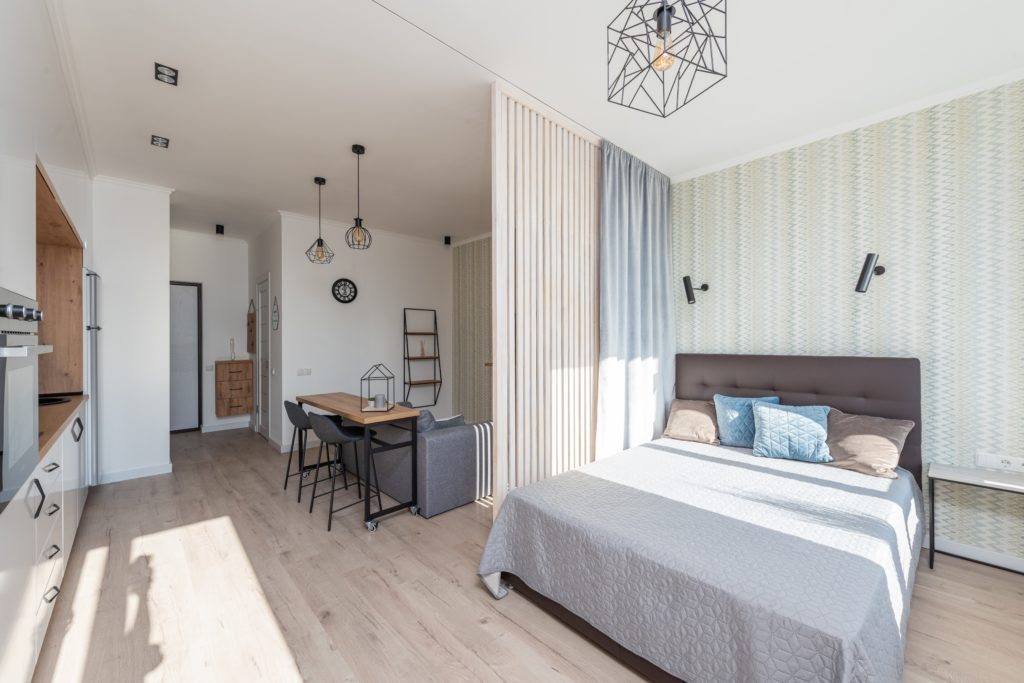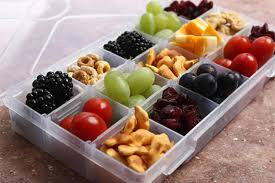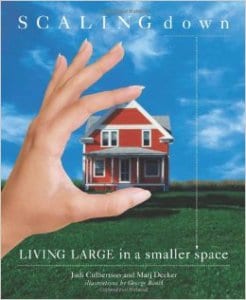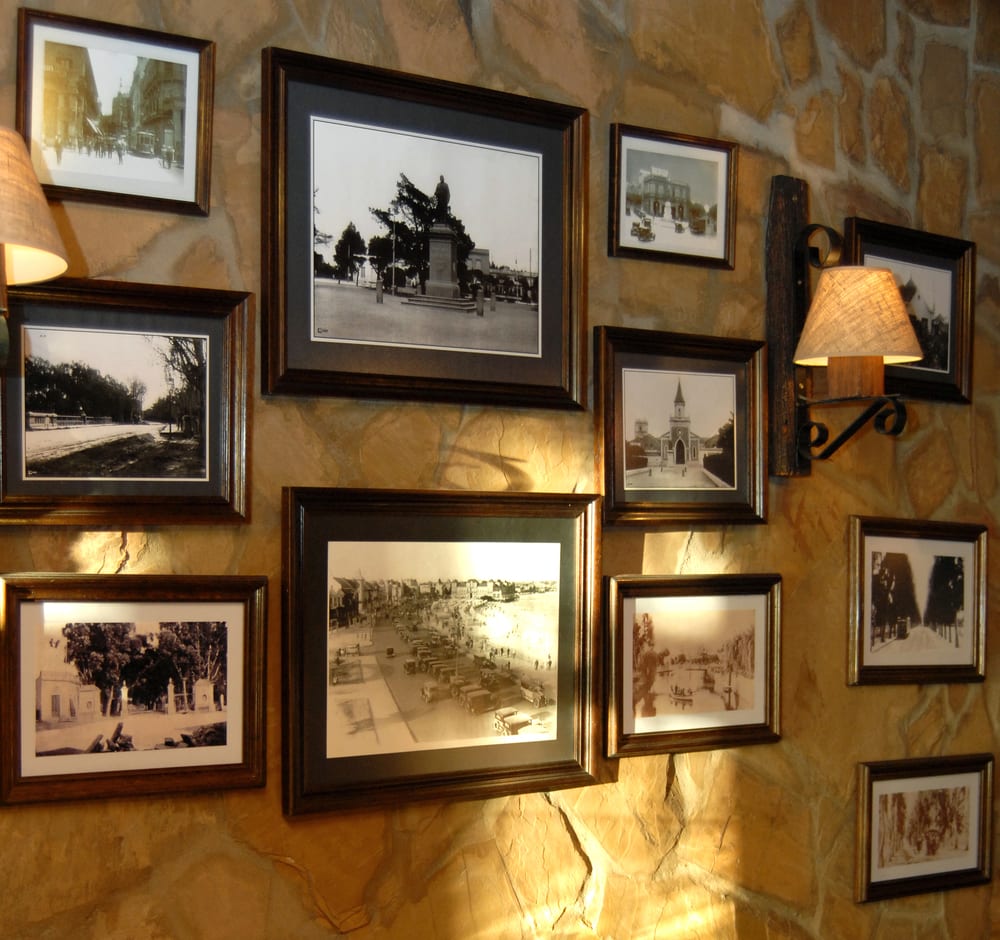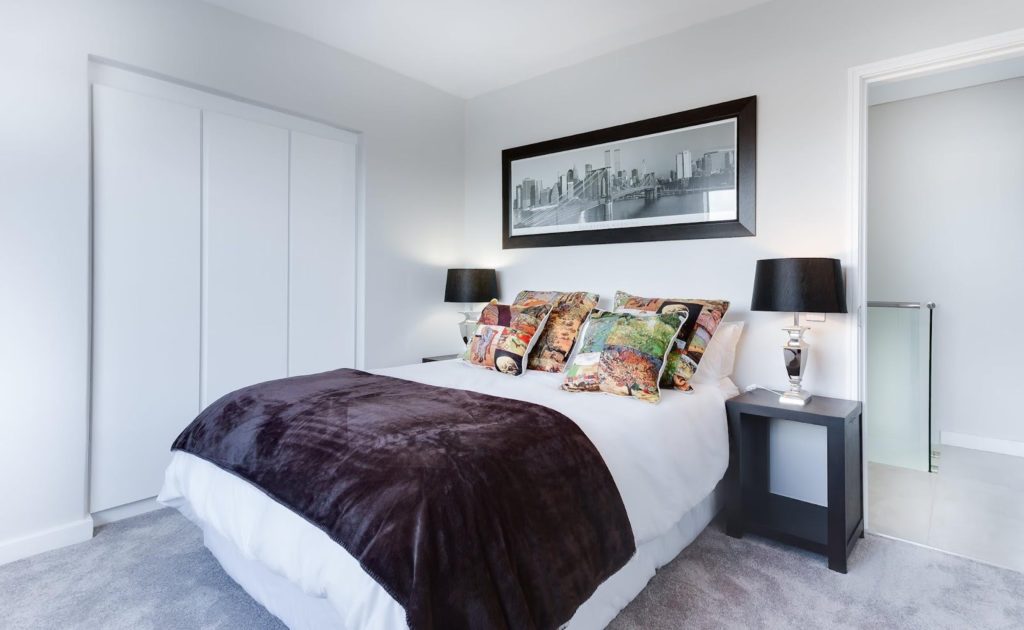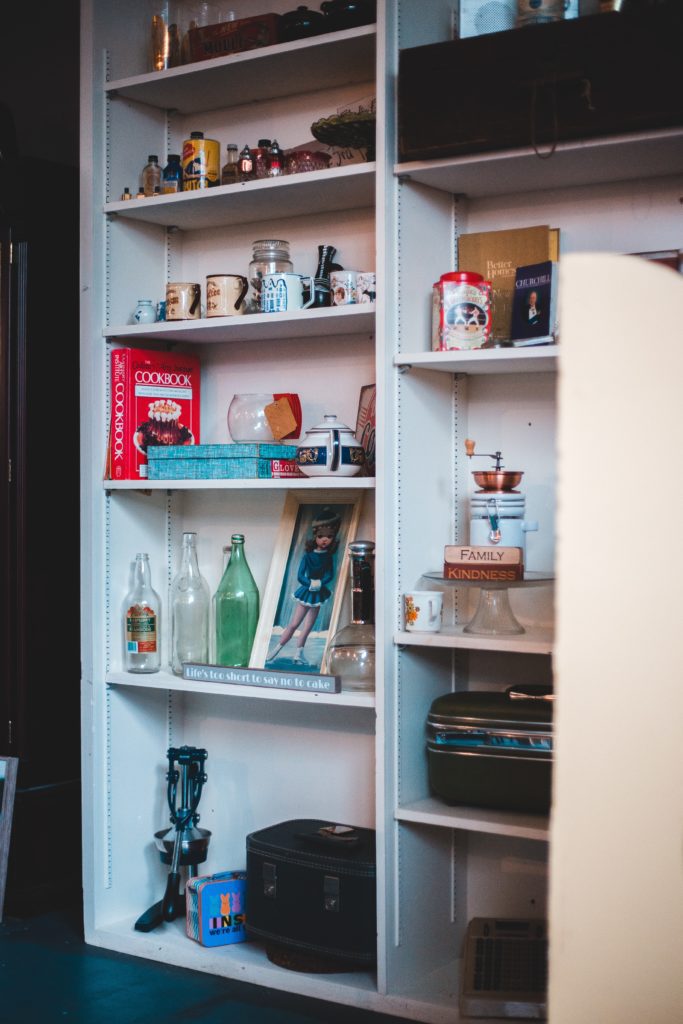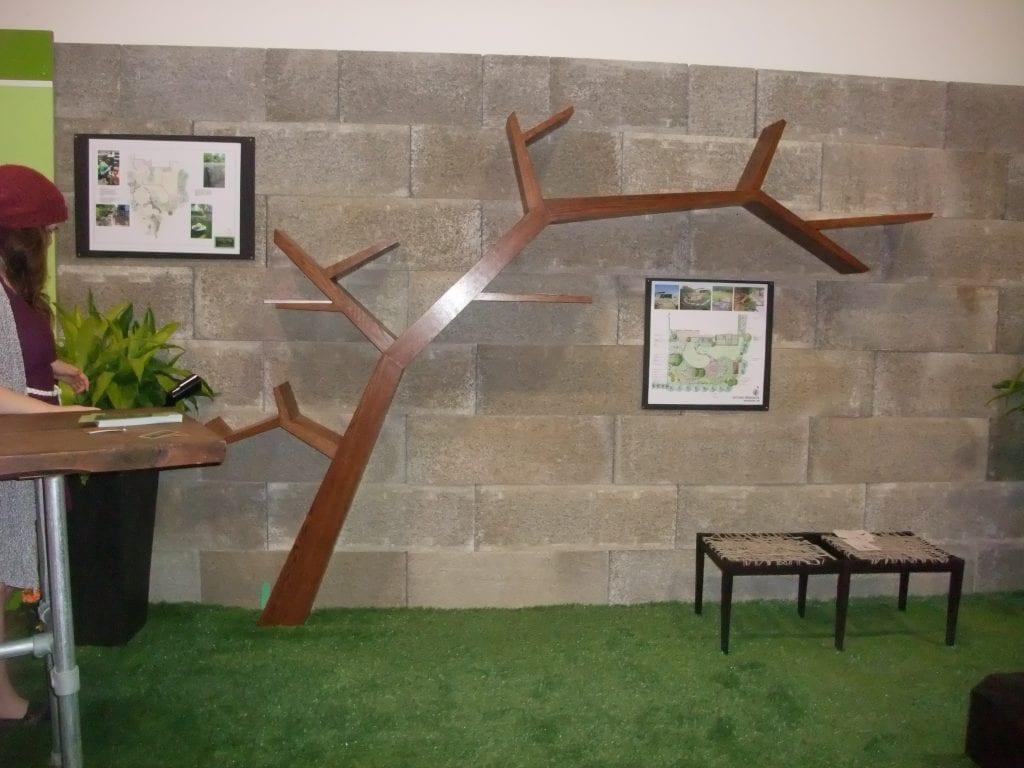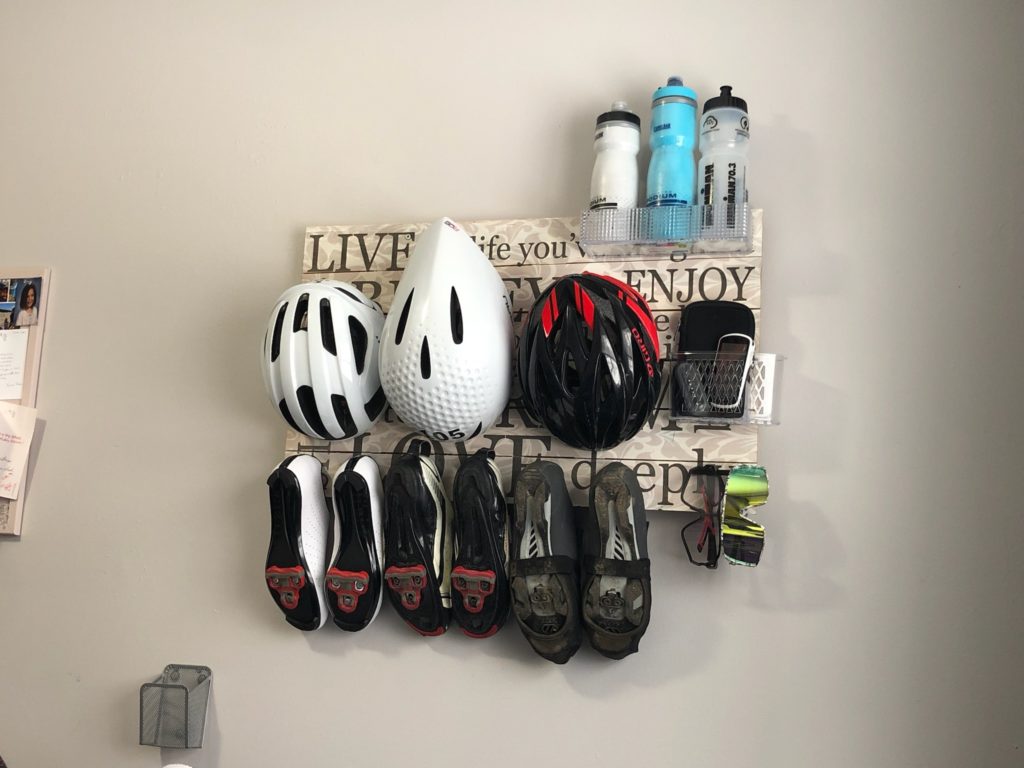Latest Blog Posts
Reading time – 10 minutes
Living in a small apartment has many challenges. The biggest is the lack of space. Many people wind up in homes that simply aren’t large enough to house all their possessions.
Fortunately, it turns out that there are numerous strategies you can use to increase the amount of space you have available. In this post, you’ll find all sorts of ways to expand the space available to you, even if you live in a studio (or something even smaller)
Use Outdoor Space
If your apartment has any outdoor space, such as a balcony or shared shed, then use it. The more outdoor equipment you can keep outside, the less it will clutter up your home. You can purchase water tight chests to protect your items from damage and keep them safe.
You’ll notice that outdoor items and tools are often the bulkiest possessions you own. While you can stuff plenty of clothes into a drawer, rigid toolboxes, and bicycles are hard to keep out of the way.
Use Multi-Functional Furniture
Another tip is to use multifunctional furniture. Doubling up saves space and reduces the need for duplication. Many pieces of furniture can be used to store your stuff, coffee tables that lift up with storage below, use a cabinet instead of a table or bench a footstool where the top lifts off to provide storage. If you have a two-bedroom apartment, get a sofa bed. You can use it as seating until guests come over, at which point you can transform it into a bed.
Add More Vertical Storage
You could also try adding more vertical storage to your apartment to increase the space you have available. Adding more vertical storage space is pretty easy. We recommend concentrating it in one room, like the bedroom, allowing you to declutter other parts of your space. When possible have the bookcases, cupboards or shelves the same colour as the wall. When they blend into the wall the room looks larger since you don’t notice the furniture. If they are a contrasting colour to your walls you notice the large pieces of furniture and the room looks smaller. Focus on providing additional vertical storage in less noticeable places like above doors or adding an extra shelf in a closet. There are many over the door organizing gadgets that provide storage on the back of doors.
Leverage Out-Of-Home Storage Wisely
Even with the best efforts in the world, you sometimes still run out of space in an apartment, especially if you own sizable possessions, like a grand piano. The most cost effective expense might be renting a storage unit. Having a small apartment with a lower rent and a self self storage unit may meet your budget better than paying more for a larger apartment. Units provide space for your belongings, enabling you to free up room in your house to easily access the things you use regularly. Decide what is important to keep and store and donate the rest. You want to rent the smallest unit possible. Organize it so you can easily access your stuff.
Organize Your Small Kitchen
Invest your time in organizing your small kitchen. These kitchens can be challenging to manage and significantly easier to take care of and use when you adopt the proper techniques.
For example:
- Use shelf risers and hooks to increase storage options
- Consider placing magnetic racks on the walls or under the cabinets
- Remove any unnecessary appliances from the countertops and store them in the cupboards
- Use foldable and stackable kitchenware
Many cookware brands now offer two-piece sets that meet 99% of your cooking needs. Reducing your cookware can free up space for other items you might want to use more often. If you have some appliances you use seasonally, barbecue, crockpot, dehydrator, deep fryer put them in less accessible places and make room for the items you use most in that season. As seasons change rearrange the storage of your small appliances.
If you have space put in a small island to have more counter space and storage space. Buy one that you can sit around and use instead of a table. If it has wheels even better, so you can move it around as needed.
Add Curtain Dividers
You might also consider adding curtain dividers to your space to make it more flexible. Having the ability to create new rooms is a great way to compensate for a lack of space and make your apartment more flexible. There are styles you can mount on the ceiling and roll down so that when you are not using it you don’t see it. You can mount a rod and hang the curtain as needed. The curtain may double as a bedspread so you don’t need to find a place to store it.
For instance, you invite guests over but don’t have a spare bedroom for them. Adding curtain dividers to the living area is an excellent way to provide them with the privacy they want.
Be More Minimalist
You can also try living a more minimalist lifestyle if the above options don’t appeal to you. Reducing the number of possessions you own can be an excellent way to free up space and enjoy your living conditions more.
Being minimalist doesn’t necessarily mean you need to adopt a Spartan approach or buy cheap items for the home. Instead, it means investing in quality belongings you will use regularly, and reducing anything that doesn’t fit into your routine or priorities.
As you’re deciding what you can live without you may want to store it somewhere else. As you start to enjoy having less to take care of, organize and clean you can start to donate items. Living well in the space you have is the best way to enjoy your life.
Here are some of the ways you can get more space in your apartment with ease.
Share in the comments your favourite way to make more storage space.
 Julie Stobbe is a Trained Professional Organizer and Lifestyle Organizing Coach who brings happiness to homes and organization to offices, virtually using Zoom. She has been working with clients since 2006 to provide customized organizing solutions to suit their individual needs and situation. She uses her love of teaching to reduce clutter, in your home, office, mind and time. She guides and supports you to be accountable for your time, to complete projects and reach your goals. If you’re in a difficult transition Julie can coach you to break-free of emotional clutter constraining you from living life on your terms. Online courses are available to help instruct, coach and support your organizing projects. Get started by downloading Tips for Reorganizing 9 Rooms.
Julie Stobbe is a Trained Professional Organizer and Lifestyle Organizing Coach who brings happiness to homes and organization to offices, virtually using Zoom. She has been working with clients since 2006 to provide customized organizing solutions to suit their individual needs and situation. She uses her love of teaching to reduce clutter, in your home, office, mind and time. She guides and supports you to be accountable for your time, to complete projects and reach your goals. If you’re in a difficult transition Julie can coach you to break-free of emotional clutter constraining you from living life on your terms. Online courses are available to help instruct, coach and support your organizing projects. Get started by downloading Tips for Reorganizing 9 Rooms.
Contact her at julie@mindoverclutter.ca
Click here to learn more about her online course Create an Organized Home.
Twitter – Facebook – Facebook group Organizing Mind and Space
Click here to learn more about working with a Professional Organizer.
Reading time – 3 minutes
This advice appeared in the P.O.S.T Professional Organizing Strategies and Tips newsletter. To learn about Professional Organizers in Canada click this link http://www.organizersincanada.com/.
There’s something about summer, the lure of the open road and the promise of a change of scenery that makes us want to load up the car and just go some place. If there’s one time you really want to be organized, it’s when you’re traveling. Traveling requires more organization than we may possess in our daily lives, so cut the stress by following an organizing checklist for inside the car.
Planning & Prepping
- Make sure your car is in good condition – oil checked, tires inspected and filled – test the air conditioning and wiper blades.
- Driver’s licenses, passports, insurance cards, ownership and registration, and contact numbers for roadside assistance should be readily accessible. Make spare copies and leave with a travel companion.
- The spare tire and jack – are in good shape and are easy to access. An emergency car tool kit should include an orange flag or pylon that you can use to signal for help if needed. Learn how to change a flat tire.
- Spare set of keys – in case they get locked inside the car or drop out of your pocket. (Even if you have to call a locksmith to open the car, you’ll be able to drive when it’s unlocked.)
- Plastic grocery bags for garbage – always!
- These blue bins fit between two seats and can hold a lot of gear. Each young member of the family can have their own bin for a blanket, sweatshirt, hat, sunglasses, and spare shoes. They can access anything that they need on their own and have a place to wrangle their souvenirs.
- A file box with a labeled folder for each section of the road trip.
Maps
- A traditional map or print custom maps for your journey at GoogleMaps or MapQuest Route Planner. CAA or AAA will also provide route maps.
- (GPS) A Global Positioning System – some travelers say they wouldn’t leave home without one!
- APPS are available on smartphones to find everything from restaurants, hotels, parks, and other points of interest as well as weather reports and plenty of games, quizzes and puzzles for young ones.
- Book the hotel ahead so you don’t have to find a place at the end of the day. Find hotels with generous cancellation policies.
In-Car Diversions
- Music – A playlist or CD collection if you’re traveling through an area where radio signals might be sketchy.
- Audio Books, DVDs and a laptop are great to have because it means you don’t need to spend time uploading content to your phone or iPad before the trip when you may be busy. Check out your local library.
- Spare batteries, charging cables and electricity power converter for electronics.
- Healthy Snacks: fruit (apples can keep well for a long time), pretzels, granola bars, crackers and nuts, along with a few fun treats. A trip to the grocery store along the way can help you save money too because the costs of dining out can add up.
- Beverages: A soft-sided cooler packed with water bottles and low-sugar soft drinks.
Toiletries within easy reach
- Tissues, paper towels, cleaning wipes, hand sanitizer and a roll of toilet paper, in case the rest stop isn’t well-stocked.
- Prescription medicines as well as basics like pain relievers, antacids and remedies for motion sickness.
- Sunglasses, sunscreen and insect repellent.
- A first aid kit with antiseptic and band-aids for minor cuts, cortisone cream for insect bites, and bandages.
Clothing & Comfort
- Wear comfortable clothing – no items which restrict or bind.
- Wear shoes that are easy to take on and off. Always have a pair of closed toe shoes available.
- A sweater or jacket over a T-shirt for instant respectability in public areas.
- A small blanket if you disagree with the temperature setting within the car.
- A pillow from home for an unfamiliar hotel bed.
Finally
- Think twice before posting about your trip on social media if your house is currently empty!!
What are your best traveling tips? Share it with us in the comments.




Contact her at julie@mindoverclutter.ca
Click here to learn more about her online course Create an Organized Home.
Twitter – Facebook – Facebook group Organizing Mind and Space
Reading time 5 minutes
The fall season is here! For many households, now’s the time to prepare for the new pace of life. Back to school and back to the office routines bring a whole lot of stress to the household. If you and your child are heading back to the office and school after several months of remote working from home, you may find it overwhelming at first. How can you manage to run your household when your routine is changing again? The truth is that for a lot of people, remote working has introduced new time management habits. So, you will need some time to find the best routines when you need to commute again. Here are some organizational tips that can save you a lot of time and stress.
Clear the garden and outdoor
Commuting is exhausting, especially after a long period spent at home. So, you want to make sure you can tackle some essential maintenance jobs rapidly before they affect your home. As the first leaves will soon fall and turn our garden into a beautiful red and orange carpet, you need to arrange for fall gutter cleaning soon. Gorilla Property Services has many locations across the country. Indeed, there is nothing worse than a clogged-up gutter on a rainy day. As fall is renowned for being a wet season, you can’t afford to wait for long. Clogged-up gutters can increase the risks of water infiltration through the walls and the roof. It’s going to be messy, costly, and stressful to arrange for repairs. But you can keep up with the autumnal challenges by outsourcing essential jobs to professionals, from gutter emptying to garden checks.
Have a plan for college students
College students are packing or have just packed to head to the campus for the first time. It is an exciting time for them, but it can be daunting too. A lot of college students are unprepared for household challenges. It can be helpful to arrange a simple schedule of chores with them. For instance, you can decide how to care for their dirty laundry, especially if they don’t have easy access to washing machines. Similarly, nothing beats a healthy family meal. Students might not take the time to cook. They might not have a great place for cooking. For example, you can arrange for pre-made dishes they can pick up on weekends and bring back to the campus. Decide what meals they enjoyed at home and make a quick and easy recipe book of their favourite meals.
Make your lunch boxes go further
For the first time in months, you have to think about lunch boxes. Planning and packing lunchboxes can take a lot of time. Without appropriate organization, you might even end up wasting a lot of money. Some households prefer to map out the lunches for the week to get ahead with grocery shopping on a budget. Others love to prepare individual ingredients separately, so they can pack a lunch box in a few seconds. You can even create a lunch packing station in your fridge and pantry, storing specific items to make lunches rapidly.
Keep everyone’s schedule visible
Last but not least, pop everybody’s schedules in a visible area at home. Pinned on a corkboard in the entryway or attached to the front of the fridge with a magnet, a shared calendar on your phones, you’ve got many options! Sharing schedules will save you planning time, so you know when everybody is free.
Going back to back to work and school after spending many months at home on a summer schedule can be daunting. You find yourself running out of time to maintain your household! But hopefully, these simple tips can help save you time and hassle in the long term.
If you need help developing routines to organize your household book a complimentary appointment with me.


Contact her at julie@mindoverclutter.ca
Click here to learn more about her online course Create an Organized Home.
Twitter – Facebook – Facebook group Organizing Mind and Space
Whether you are moving from a house to an apartment, retirement home or you have already done this but still have abundance in your home and want to scale down even more understanding the where, why, who how and what can make the decisions easier.
Where does all the stuff come from?
It may not even be your stuff. Some of you have things from your parents downsizing that ended up at your house because your Mom and Dad didn’t want to give it away but didn’t have room, so out of respect to your parents you stored it at your house. Perhaps your children have moved out but their stuff hasn’t.
Why do we keep so much?
During the Depression, we learned to keep an iron grip on anything that might still have some good in it. Then we were encouraged to buy, buy, and buy and to acquire every luxury we could afford. Next, items began to be manufactured so cheaply that when you couldn’t find it you bought another. The Reagan years were about visible consumption. We had TV shows like The Lifestyles Of The Rich and Famous. We started competing with millionaires. Perhaps you have spent 40 years accumulating and now you are spending time getting rid of excess.
Who is downsizing?
The first thing is for YOU to make the decision that it is necessary to do it. Not because your spouse or your sister or friend says you should. Just like losing weight or quitting smoking, it has to be your decision otherwise you won’t be successful. It is a hard process not only because it can be very physical but there are a lot of emotions that go with it and it can be a long process. Our culture seems to think that building up is inherently better than scaling down. Fewer luxuries make you appear to be a less successful person. The idea that some people judge your worth by the things you own, rather than by your personality and achievements can stop you from downsizing. It can be life changing to let go of your things. When the process is over, you may feel
- less stressed,
- sleep better,
- have more time to be with family, grandchildren or even travel.
Scaling down does not mean renouncing your own style. It means stripping away things that no longer fit or do not contribute to making your lifestyle easier. You want to be able to find the things you need and love.
How? Make a Plan
Once you have made your decision to downsize or streamline before you begin the process it is important to know what you want as the outcome and set a goal of what you ultimately want it to look like. If you’re moving – you need to know room sizes and what are the absolute must have large items like a bed, couches, dressers, antiques etc. Write it all down. Once you know what you want, and what it should look like and visualize the end product then you start to go through your things. It will help make the decisions easier because you can see if it will fit your plan.
What is stopping you?
If you are the type of person that has a hard time getting rid of things, try to understand why it is difficult for you.
- Are you sentimental?
- Do you like to be in control?
- Is it about pride?
- Do you hate making decisions?
- Is it too painful to revisit certain parts of your life?
Being honest with yourself makes the process easier.
When?
Schedule time to do it when you are not rushed and do one room, box or corner. Give yourself a set amount of time, if you feel you want to continue then great, but don’t become overwhelmed.
Here are some steps you can take to tackle the job
- Set up a few boxes or bins and label them. Charity, family, garbage, recycle, keep.
- While sorting, group like with like. Put all your books together, electronics, collections, paper etc.
At the end of the session
- take the donated items to the front door or even better right out to your car so that you will drop them off
- put the recycling out
- put the garbage out
- move items that you are returning to other people close to the door
When deciding whether you should give it away, go back to your plan and see if it,
- will fit into your space
- will go with your new design or décor.
- If not donate.
After grouping all the items you can then see how much you really have and you may need to donate some more items.
Collections and Antiques
The hardest thing for people to let go of are their collections and antiques especially, if they belonged to a parent or a loved one that has passed. Ask yourself:
- Do you have room for them?
- If they end up in storage or in a box how treasured are they?
- Could you just keep one or two and give away the rest?
- Can you take pictures of them?
- Do some research to see if they are valuable and have someone sell them on eBay for you or contact an antique dealer.
If you don’t have room for it give it to a family member that has the same passion for collecting so they can enjoy it and you can visit. Invite people over for brunch. After the meal show them the items you are giving away and let them select things that have meaning for them.
Staying surrounded by things that remind you of the past or which you respond to predictably may prevent you from moving ahead with your life. Remember they are just things you will still have the memories. After you have completed downsizing you will end up with a beautiful home, filled only with what you need and love, that uses every inch of space the way you want. You will have control over your environment and freedom from chaos.
Need help with downsizing, contact Mind over Clutter for a complimentary 30-minute chat on Zoom.





Contact her at julie@mindoverclutter.ca
Click here to learn more about her online course Create an Organized Home.
Have you run out of space on your walls to hang your pictures? Many people have photos in boxes just waiting to have time to organize them. Don’t wait for the perfect time or for a day when the weather is inclement. Schedule time to get started.
What to do first
As you look over the photos you may not be able to remember when you took the picture, the year or date. Instead of organizing the photos chronologically think about using themes. Sort your pictures into celebrations, vacations, family, friends, pets and homes etc.
Step two
Next, get rid of duplicates and out of focus pictures. Remove pictures where you don’t recognize the people or location. Once you have your best pictures grouped you may want to write on the back the name of the people in the picture, year or location.
Step three
Now you can decide if you want to scan them, place them in boxes with dividers or scrapbook your photos. Scanning can be expensive so scan the best of the best. You can digitize them yourself by taking a picture of the photo with your phone and saving it to a folder on your laptop.
Hire a photo organizer
Photo Organizers work with clients to sort through images, find connecting themes, and neatly catalogue and edit them into photo narratives and albums that clients are proud to share – now and for years to come. Association of Personal Photo Organizers
Need more help
Enjoy spending time with your memories. If you need help regaining control of your photos and memories, I am ready to take on the challenge.





Contact her at julie@mindoverclutter.ca
Click here to learn more about her online course Create an Organized Home.
The benefits of having a bedroom free of clutter are obvious to see. It is easier to move in the room without tripping on items left on the floor. You can find things on your night table without bumping other items over. Have you thought about how a clutter free bedroom might make you feel? You will feel as though you have a clearer mind when you are in that room, and that might help you unwind and sleep more effectively. When it is less cluttered, you might enjoy being there more and it can become a sacred place. Fortunately, it’s relatively easy to gain a clutter-free bedroom, so let’s take a look at four steps you might not have thought of as a way towards achieving that.
Match The Bed To The Room
Have you seen a bedroom with a bed and furniture that take up all the space so that it is difficult to move around the room? Did you ever think the cluttered feeling could be caused by the size of your bed? Try to match the bed to the room size. A less crowded room is easier to keep clean and organized. When you have a huge bed, one problem is that you might struggle to feel relaxed in that room with no place to move. You might need to visit a mattress store in your area to find better options for your space. Visually your room will look bigger, less crowded and more inviting. You will feel less anxious entering the room and have less stress. Practically it will be easier to get things out, put them away and make your bed every day.
Store Items Under The Bed
This is a simple thing you can do which will make your bedroom less cluttered and visibly cleaner. Storing items under the bed is something that is not always possible – for instance, if you have a divan base that almost touches the floor. Captain’s beds are built with drawers under the bed for storage. Some beds have a base that is hinged to create a storage area in the bed frame. You can create storage under your bed by using bed risers to lift the bed up. When there is space under the bed, make use of it. It’s amazing how this space can be used so you have more room in your closets or dressers.
Minimize Wall Decorations
It can be tempting to go all out and try to decorate your bedroom in a way that is beautiful. You might find it quite beneficial to not go overboard here. In fact, you’ll find that keeping wall decorations to a minimum will lead to a space that has less visual clutter and a much clearer appearance. Put items on the wall that have a calming effect so it is easier to relax and clear your mind as you get ready to sleep.
Store Things Elsewhere
Finally, there is something to be said about not letting the bedroom become a general dumping ground for random items around the home. It is one of the most important rooms in the home and one that you need to care for and respect. It is a space where you rejuvenate your mind and regenerate your body for the next day. It is easy at the end of a tiring day to bring things into the bedroom, put them down and say you’ll put them away tomorrow. Take the extra minute and put them away so you don’t have a constant reminder of an unfinished task when you are trying to go to sleep. Don’t end up with lots of random items cluttering up your restful space.
Usually, I talk about the process of decluttering a room to have less unwanted stuff. These 4 steps approach making a bedroom clutter-free in a different way, through the thoughtful selection of furniture, decoration and storage. They also help to create a room with less visual clutter and mental clutter.
In the comments share how you make your bedroom clutter-free.


Contact her at julie@mindoverclutter.ca
Click here to learn more about her online course Create an Organized Home.
Twitter – Facebook – Facebook group Organizing Mind and Space
Click here to learn more about working with a Professional Organizer.
With many people working from home, it is important to have time when you’re not interrupted. Make sure to have a sign or signal that indicates you are unavailable.
Many people realize that multitasking is not the best way to get work completed. However, they experience many small interruptions in their day, e-mail, texting and phone calls that take away from concentrating on a project.
“Drive by” conversations, when colleagues stop by your desk, stop you in the hall or a family member bursts into your office and gives you information also take time away from completing important tasks. As well the information may be forgotten or lost.
Some offices have designated a specific time of the day for working on projects. It is an interruption-free time to concentrate on work during which employees can’t send or answer emails, texts, phone calls, attend meetings, etc. Each office is different so the designated time may be office-wide or scheduled into each person’s work day, week, or month individually. It is important that this time and format are respected by your colleagues, family and supported by management. You may be surprised how much you can get done in one hour without interruptions and your full concentration on one task at a time.
How do you plan on scheduling interruption free time? Let me know in the comments.




Contact her at julie@mindoverclutter.ca
Click here to learn more about her online course Create an Organized Home.
Twitter – Facebook – Facebook group Organizing Mind and Space
Every storage room has its different problems to consider. Some have very low ceilings. Some may be hard to get into. The walls and corners might be angled. There are a number of questions to ask yourself before you purchase shelving for your storage room.
Show or Stow?
1. Do you like things displayed on open shelves or stowed behind closed doors? This will help you determine if you want a cupboard or shelving.
Measure Carefully
2. Next measure the space. You need to get storage that uses all the area and not buy storage that leaves some of the area unusable. This happens when one storage unit is too large and another storage unit can’t fit into the remaining space.
Lids or no lids?
3. Next ask yourself, will you open a lid to put things into a container, will you reclose the top of a box? If the answer is no, cut the flaps off the box or purchase containers without lids. You want to make it as easy as possible to get the items into the correct box.
Make it easy to get to the bottom container
4. Lastly ask yourself, if your bins are stacked will you unstack them to put something in the bottom container? Will you restack the containers on the storage unit? If your answer is no then buy large containers that fill the vertical space between the shelves so you can maximize your storage. It is usually good to have two or three containers on each shelf so they are easy to move and not too heavy.
How to place items on the shelves
Now you have your storage units and bins.
- Store items you use frequently at eye level.
- Store heavy items on the bottom shelf
- Store items close to where you use them
- Store infrequently used items up high or in less accessible areas.
Hockey bags?
Trying to store hockey bags? Try placing two shelving units that are 4 or 5 shelves high, with 24” or 36” deep shelves, one in front of the other and securely attach them together. This will hold one bag per shelf with room to leave it open to air out and place some items beside the bag to dry.
With the right shelves and bins, it is easy to sort your items into categories, place them in a labelled container and locate them in your storage room. Remember to keep only what you need and love.
Book a complimentary 30-minute virtual chat with me to get started planning your storage area.





Contact her at julie@mindoverclutter.ca
Click here to learn more about her online course Create an Organized Home.
Do you sometimes feel that you will never get ahead? That life is holding you back. I feel that way some days when I am working in my business. There can be a number of stumbling blocks to becoming successful. Some we may not have any control over. One of the biggest stumbling blocks can be our own attitude.
Overcoming a mindset of lack and embracing abundance requires adopting new habits. Here are some steps you can take to cultivate an abundance mindset.
Your beliefs
Start by becoming aware of any negative beliefs you have about abundance and wealth. Sometimes you may think “money is scarce,” “I’ll never have enough,”. Interestingly you may think that “rich people are greedy” and so you do things so you won’t become rich. Think about your beliefs and make sure they are positive and empowering ones so you can create wealth and abundance in all areas of your life.
Feel gratitude
Gratitude is one way to shift your mindset. Acknowledge and appreciate the things you already have in your life, no matter how small they may seem. Make a habit of expressing gratitude for your experiences in supporting loved ones, your health, or any opportunities that come your way.
Show generosity
In my Organizing Mind and Space Facebook group, we did a random acts of kindness challenge. Show your generosity by doing something unexpected for someone. Here are some ideas for you.
When you give without expecting anything in return, you reinforce the belief that there is always enough to share. This creates a positive abundance cycle of giving and receiving.
Take action
An abundance mindset alone is not enough; it must be paired with action. Take steps toward your goals, whether it’s investing in your education, starting a business, or seeking new opportunities. Don’t be afraid to take calculated risks and step out of your comfort zone. I was once told that even if you fall on your face you are still moving forward. Use your mistakes to learn new things and create new opportunities for yourself. Taking action alone can be difficult. Surround yourself with people who support and uplift you.
These are 4 steps you can take to change a mindset of lack, not having enough, wanting more and not sure how to move forward. A mind set of abundance helps you to see your future in a way that brings a sense of fulfillment, accomplishment and excitement into many areas of your life.
In the comments let me know how you overcome those feelings that you can’t achieve something that you want to accomplish.
Julie Stobbe is a Trained Professional Organizer and Lifestyle Organizing Coach who brings happiness to homes and organization to offices, virtually. She enjoys working with her clients to provide customized organizing solutions to suit their individual needs and situation. She reduces clutter, streamlines processes and manages time to help her clients be more effective in reaching their goals. Julie can coach you to break-free of the physical or emotional clutter constraining you from living life on your terms.
Contact her at julie@mindoverclutter.ca
Twitter – Facebook – Facebook group Organizing Mind and Space
Click here to learn more about working with a Professional Organizer.
Sometimes when we are organizing we make the organization look like art. We organize books by the colour of their spine, hang baskets on a wall in an interesting pattern or use brightly coloured baskets to hold exercise equipment. Let’s look at the reverse of this idea. Can artwork help you get organized?
I attended the National Home Show in Toronto Canada a few years ago. I saw this great piece of artwork. If you have a small home this artwork is dual purpose. It can be used to hold CDs, video games and equipment, and books. Plants would look lovely on this tree especially ivy or other hanging plants that would give it “leaves”. It would be fun to decorate it for any season or special event.
Here is a creative use of a sign. This piece of artwork has hooks added to it to organize cycling gear. When the cycling gear is removed you have a lovely picture on your wall.
Let me know about artwork in your home that helps you stay organized.




Contact her at julie@mindoverclutter.ca
Click here to learn more about her online course Create an Organized Home.
Twitter – Facebook – Facebook group Organizing Mind and Space
Click here to learn more about working with a Professional Organizer.

